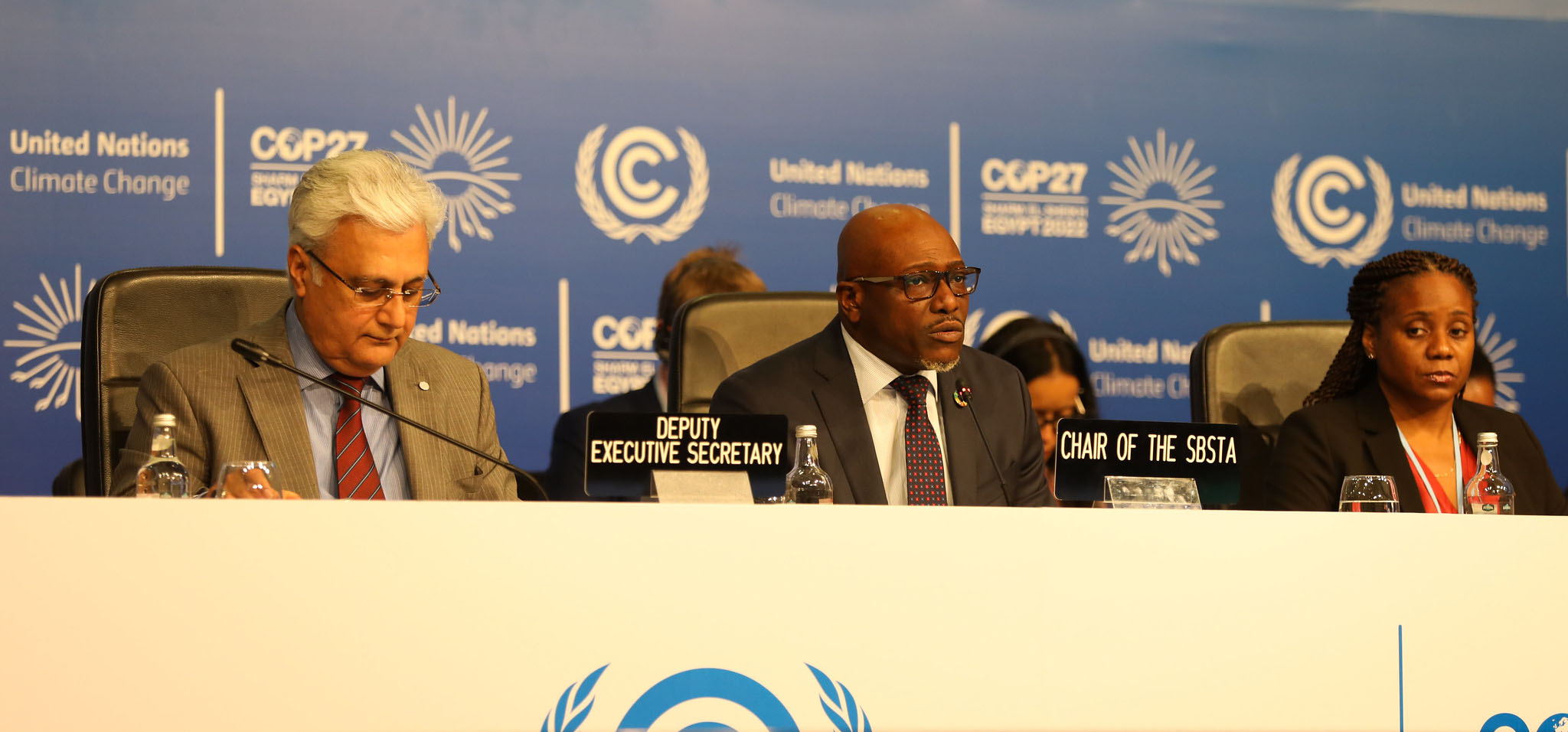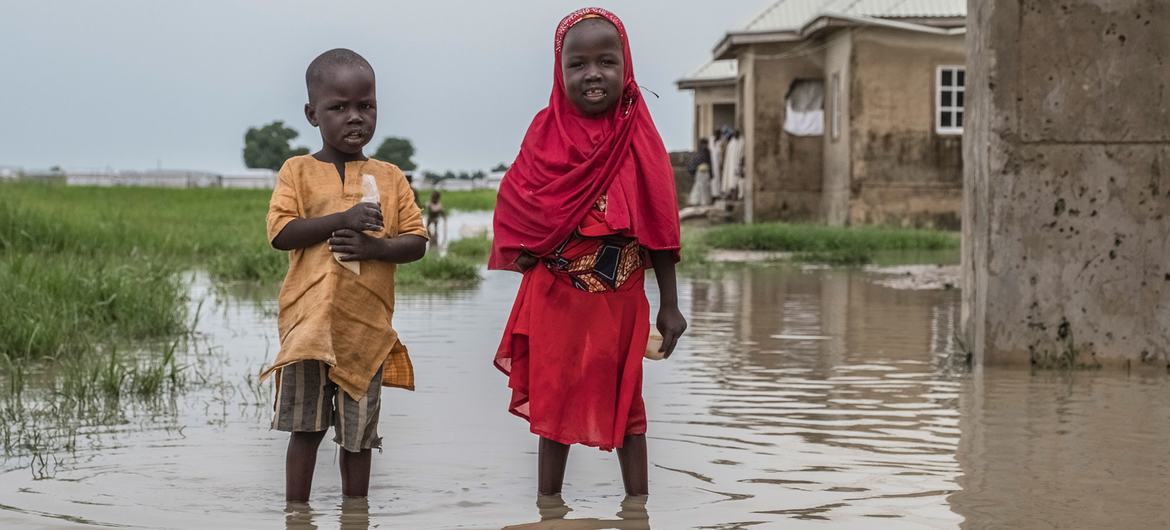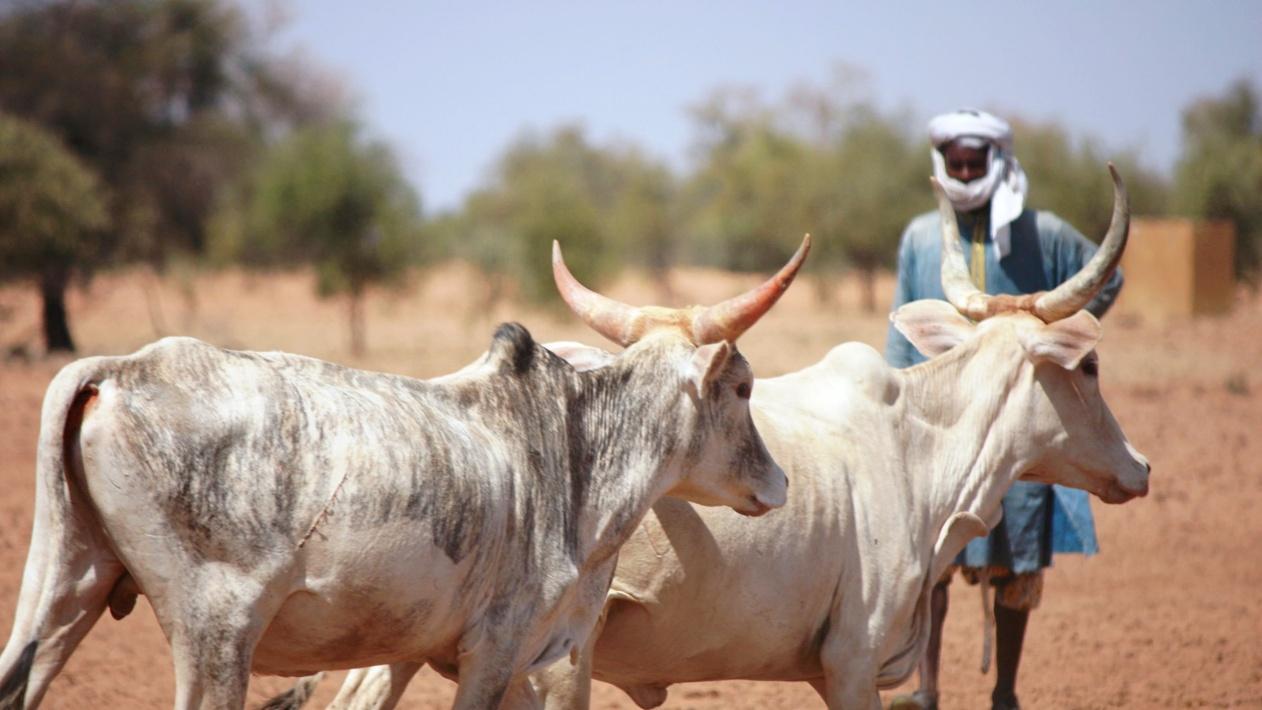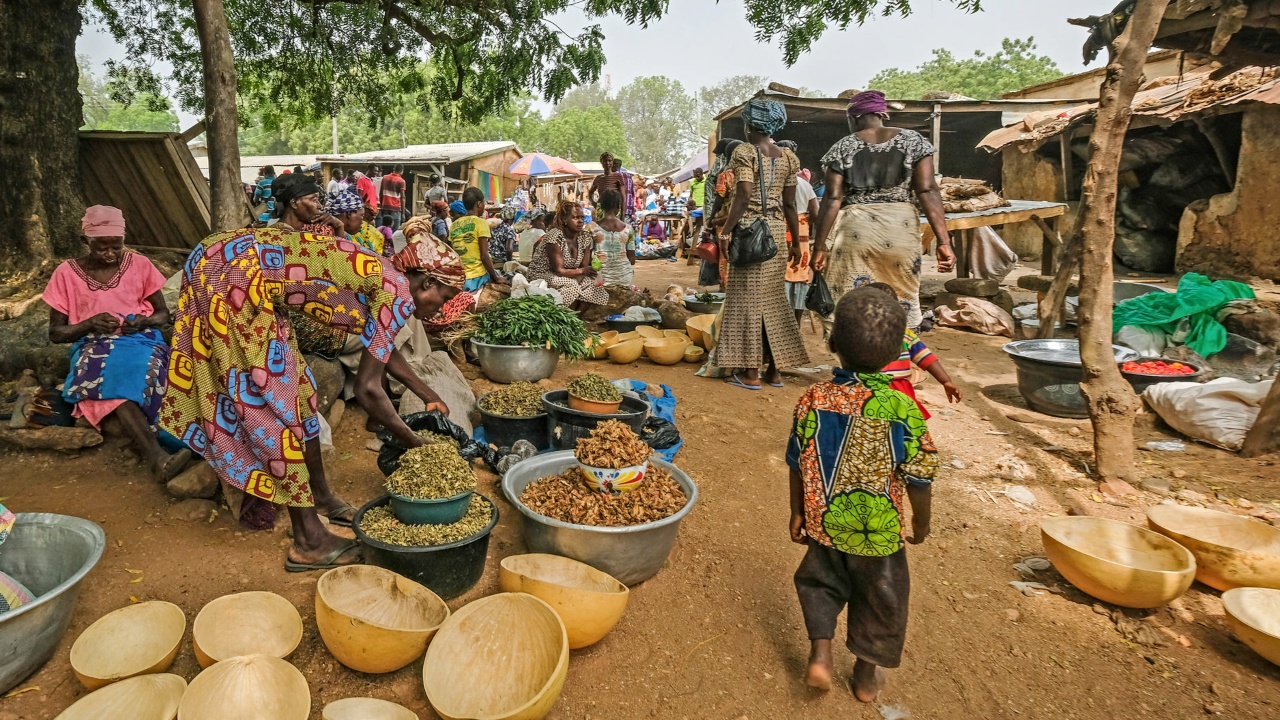As the Climate Vulnerable Forum publishes the third edition of its Climate Vulnerability Monitor: A Planet on Fire, Elizabeth Robinson and Shouro Dasgupta reflect on COP27, the impact climate change is already having on child health and nutrition in Egypt, and the potential impacts of further global temperature increases.
The links between climate change, food security and child health outcomes are complex. Childhood stunting and wasting are linked to insufficient access to nutritious food, but also to a child’s physical and natural environment, including poor sanitation, food-borne mycotoxins (produced by moulds), inadequate health care, and infection with parasites. Each of these are in turn affected by climate change.
Both short-term and long-term exposure to drought is worsening child health and undernutrition, leading to more stunting and wasting, with the youngest infants most vulnerable. Across low- and middle-income countries, the increasing incidence of heat stress, heatwaves and droughts is affecting crop yields. These conditions are also reducing access to sufficient water for sanitation, which can lead to the spread of disease and the pollution of ground and surface water. And there is increasing evidence that higher levels of CO2 in the atmosphere are reducing the nutritional content of some grains.
Impacts of Egypt’s changing climate
Average temperatures in Egypt have risen by approximately 0.9°C since 1900, and the frequency of droughts has also increased. By 2050, temperatures are projected to rise by 1.6°C under a low emissions scenario, and by 2.3°C under a high emissions scenario. While winter temperatures have only been warming by an estimated 0.07°C per decade since 1960, summer temperatures have been warming by 0.31°C. Egypt covers a large territory and temperature levels differ greatly across the country, with the governorates of Aswan, Red Sea and South Sinai experiencing relatively higher temperatures than other regions.
Warming temperatures in already hot countries such as Egypt are associated with worse food security and worse health outcomes. Over the past two decades crop yields and overall grain production for three of Egypt’s most important crops – maize, wheat and rice – have stopped trending upwards. In addition, rising temperatures are reducing the maximum potential yield that can be achieved, assuming there are no limitations on water or nutrients, due to faster crop maturation.
Egypt is highly dependent on food from other countries and imports more than 60% of the wheat it consumes. This makes the country particularly vulnerable to shocks and systemic crises along global food supply chains, whether caused by weather and climate-related shocks, such as the successive droughts in Australia in the early 2000s; supply shocks such as the restrictions on wheat exports from Ukraine in 2022; or demand shocks, such as when governments imposed lockdowns in response to COVID-19. Compounding this vulnerability, wheat prices have increased significantly since 2020, reflecting these recent supply shocks.
Food security and child health under different levels of warming
Food security, already negatively affected by climate change, is projected to worsen further with future warming. Even under the most optimistic scenario, in which the Paris Agreement target is achieved, keeping the increase in mean global temperature to within 1.5°C above pre-industrial levels, moderate or severe food insecurity in Egypt, in terms of the proportion of the population affected, is projected to increase by about 4 percentage points between 2021 and 2040. It would then increase further, albeit at a lower rate, until 2100. In contrast, under a near-catastrophic warming scenario, where temperature rises by 3.6°C by 2100, moderate or severe food insecurity is projected to increase by nearly 5 percentage points by 2040, and by over 14 percentage points by 2100, further demonstrating the detrimental effects of not reaching the global net zero target. (Climate Vulnerability Monitor).
There are also clear health benefits from global efforts to achieve the low emission scenarios: child health in Egypt would be significantly worse under higher warming scenarios (Table 1). Even if the 1.5°C Paris target is met, child mortality in Egypt is projected to increase by around 2.3% by 2050 and by around 1.4% by 2070. However, under the near-catastrophic warming scenario, child mortality is projected to increase by nearly 7.5% and nearly 9.5% by 2050 and 2070, respectively. Projections for other child health outcomes show a similar pattern.
Table 1: Child health impacts under climate and socioeconomic scenarios in Egypt: % change compared with the 1995–2014 reference period
| Scenario | Low emissions/Paris target achieved (1.5°C)1
|
Moderate emissions/Glasgow commitments achieved (2.7°C)2 | Business as usual (2.95°C)3 | High emissions/near catastrophic (3.6°C)4 | ||||
| Year | 2050 | 2070 | 2050 | 2070 | 2050 | 2070 | 2050 | 2070 |
| Neo-natal mortality | 2.81 | 1.73 | 3.86 | 4.64 | 6.62 | 8.24 | 8.02 | 10.69 |
| Child mortality | 2.34 | 1.37 | 3.34 | 4.56 | 4.97 | 6.29 | 7.43 | 9.59 |
| Wasting | 2.62 | 1.62 | 4.00 | 5.76 | 5.45 | 8.28 | 8.46 | 11.50 |
| Stunting | 2.90 | 2.01 | 4.40 | 5.58 | 5.20 | 6.46 | 7.93 | 11.34 |
Note: Scenarios equate to: 1. SSP1-RCP1.9; 2. SSP4-3.4; 3. SSP2-RCP4.5; 4. SSP3-RCP7.0.
Source: Authors
Reducing the severity of climate impacts on food insecurity and child health
Policies and interventions are needed that will improve access to and availability of food, and access to water and sanitation, in addition to direct health interventions and general development efforts.
There are significant differences in climate impacts, food security and the state of health across Egypt’s different regions, and between different social and demographic groups, emphasising the need for tailored policies that take into account local context. For example, female-headed and low-income households are particularly vulnerable to increased food insecurity.
General development policies, including investing in girls’ education, increasing household income and wealth, and widening access to healthcare facilities, remain important for improving child health and nutrition. However, there is scope for more targeted policies to directly affect food security, focused on both availability of and access to food. For example, climate change is affecting patterns of precipitation and the incidence of pests and diseases. Availability of food can be improved through investing in climate-smart agriculture, which might include developing and adopting or adapting location-specific drought-resilient crop and livestock varieties. These types of initiatives, if successful, will also reduce import dependence so that Egypt is less exposed to systemic shocks along the value chain. However, greater reliance on domestic production brings its own challenges, given the rising incidence of climate shocks. Increasing grain storage capacity increases resilience to both local and external shocks to food production and the broader food system.
Access to food can be improved through targeted ‘safety nets’, which can comprise either direct cash payments or food assistance, where food is given directly or via instruments such as food stamps or coupons to those in need. Both types of safety net have proven to reduce food insecurity during the COVID-19 pandemic, though cash transfers were more effective, most likely because they targeted COVID-induced loss of income. In many lower-income countries safety nets are increasingly seen as a critical element of improving health and wellbeing more broadly.
Historically, reductions in global undernutrition went hand in hand with increases in economic growth. However, since 2017, a decoupling seems to have occurred, suggesting that while economic growth needs to remain a priority for low- and middle-income countries, even greater attention needs to be paid to improving food security in parallel. At COP27 there have been many discussions on building resilient food systems during the negotiations, and it is the first COP to feature a Food Systems Pavilion. However, arguably, there is yet to be adequate discussion over the role of agriculture in emissions reductions. While African countries such as Egypt need to adapt and build resilience to an already changing climate, the child health and food security benefits from greater global mitigation efforts are clear and significant, and food systems have a role to play.
This article was originally published by the Grantham Research Institute on Climate Change and the Environment.
Photo credit: UN Climate Change on Flickr used under CC BY-NC-SA 2.0






